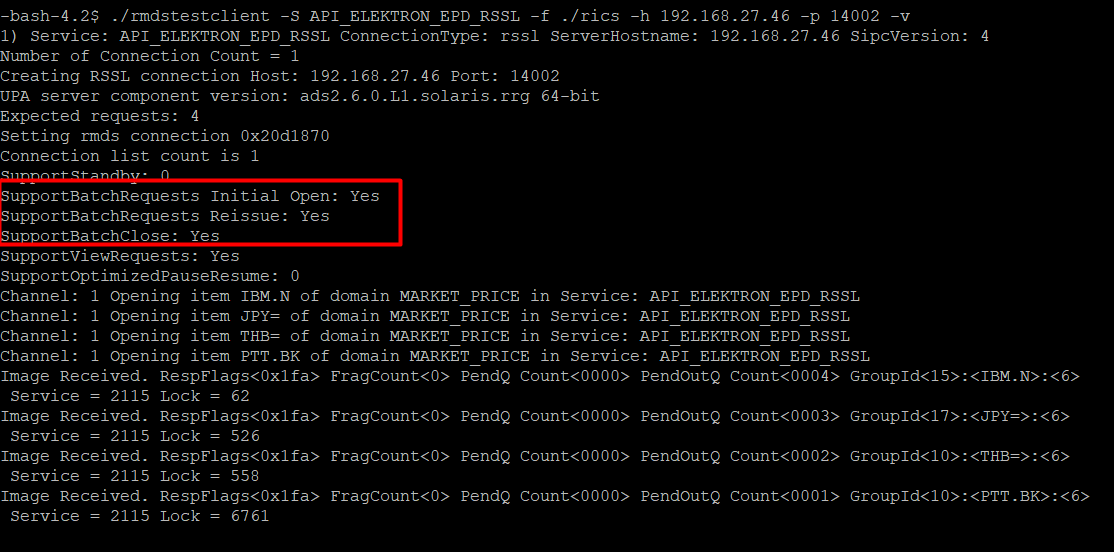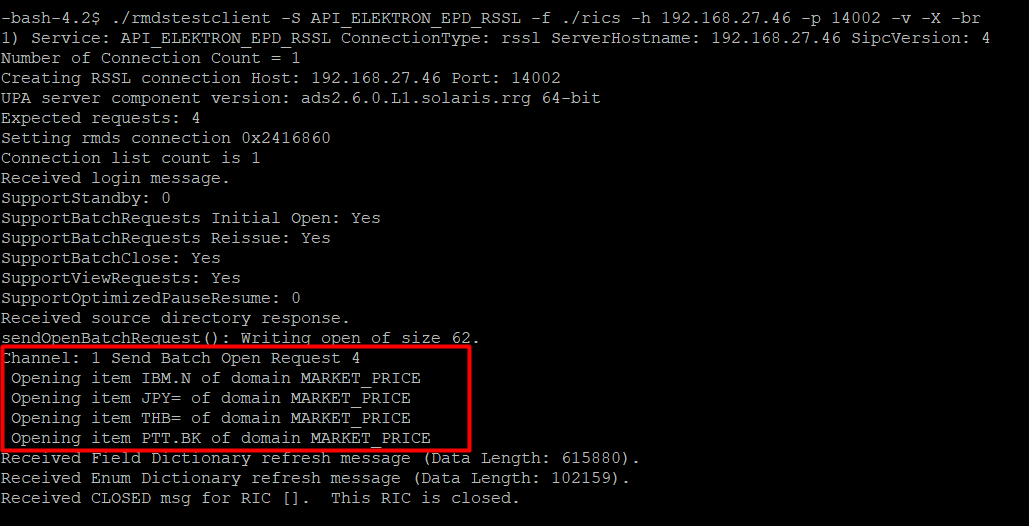batch requests is not working with ADH and ADS 2.6.x
Environment is Redhat Linux enterprise and upa upa8.0.0.L1.linux.rrg
using rmdstestclient to send batch request of 400 symbols is not working due to ADH and ADS breaking the symbol request individually. The interactive provider supports batch requests, however, ADH is breaking the batch requests into single item request.





